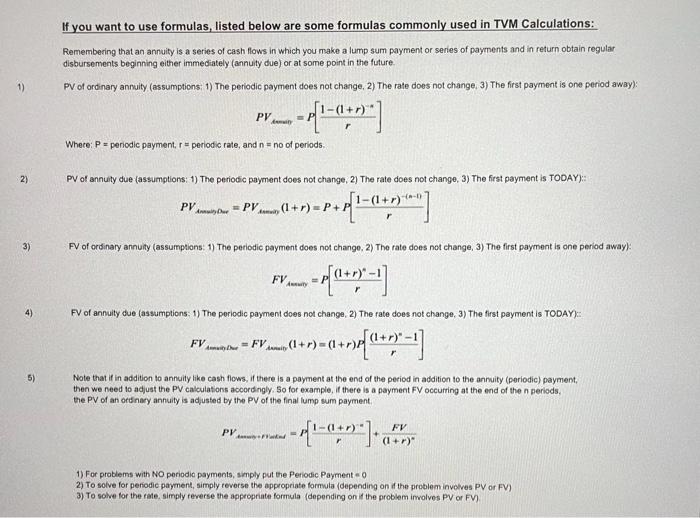Answered step by step
Verified Expert Solution
Question
1 Approved Answer
Please solve this problem using excel or the formulas listed below. Thank you A 6.28% annual coupon, 25 -year bond has a yield to maturity
Please solve this problem using excel or the formulas listed below. Thank you 

A 6.28% annual coupon, 25 -year bond has a yield to maturity of 4.48%. Assuming the par value is $1,000 and the YTM is expected not to change over the next year, what should the price of the bond be today? If you want to use formulas, listed below are some formulas commonly used in TVM Calculations: Remembering that an annuity is a series of cash flows in which you make a lump sum payment or serles of payments and in return obtain regular disbursements beginning either immediately (annuity due) or at some point in the future. PV of ordinary annuity (assumptions: 1) The periodic payment does not change, 2) The rate does not change, 3) The first payment is one period awa PVdwaip=P[r1(1+r)] Whece: P= periodic payment, r= periodic rate, and n= no of periods. PV of annuity due (assumptions: 1) The periodic payment does not change, 2) The rate does not change, 3) The first payment is TODAY): PViminin=PVAnaid(1+r)=P+P[r1(1+r)(n1)] FV of ordinary annuity (assumptions: 1) The periodic payment does not change. 2) The rate does not change, 3) The first payment is one period away FVAwaic=P[r(1+r)n1] FV of annuity due (assumptions: 1) The periodic payment does not change, 2) The fate does not change, 3) The first payment is TODAY): FVAmain0=FVAlmaib(1+r)=(1+r)P[r(1+r)n1] Note that if in addition to annuity like cash flows, if there is a payment at the end of the period in addition to the annuity (poriodic) payment, then we need to adjust the PV calculations acoordingly. So for example, if there is a payment FV occurring at the end of the n periods. the PV of an ortinacy annuity is adjusted by the PV of the final lump sum payment. 1) For problems with NO poriodic payments, smply put the Periodic Payment =0 2) To solve for perodic payment, simply revorse the appropriate formula (depending on athe problem invelves PV or FV) 3) To solve for the rate, simply reverse the appropriate formula (depending on it the problem imolves PV or FV) 

Step by Step Solution
There are 3 Steps involved in it
Step: 1

Get Instant Access to Expert-Tailored Solutions
See step-by-step solutions with expert insights and AI powered tools for academic success
Step: 2

Step: 3

Ace Your Homework with AI
Get the answers you need in no time with our AI-driven, step-by-step assistance
Get Started


